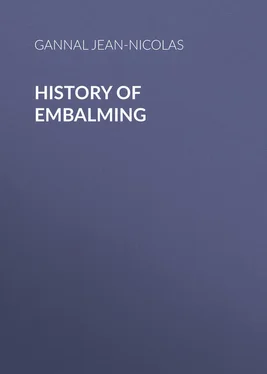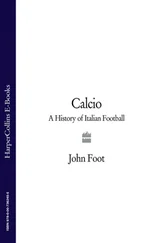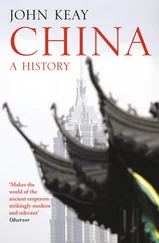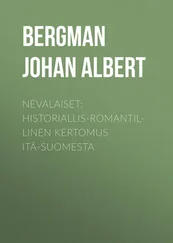Jean-Nicolas Gannal - History of Embalming
Здесь есть возможность читать онлайн «Jean-Nicolas Gannal - History of Embalming» — ознакомительный отрывок электронной книги совершенно бесплатно, а после прочтения отрывка купить полную версию. В некоторых случаях можно слушать аудио, скачать через торрент в формате fb2 и присутствует краткое содержание. Жанр: foreign_antique, foreign_prose, на английском языке. Описание произведения, (предисловие) а так же отзывы посетителей доступны на портале библиотеки ЛибКат.
- Название:History of Embalming
- Автор:
- Жанр:
- Год:неизвестен
- ISBN:нет данных
- Рейтинг книги:5 / 5. Голосов: 1
-
Избранное:Добавить в избранное
- Отзывы:
-
Ваша оценка:
- 100
- 1
- 2
- 3
- 4
- 5
History of Embalming: краткое содержание, описание и аннотация
Предлагаем к чтению аннотацию, описание, краткое содержание или предисловие (зависит от того, что написал сам автор книги «History of Embalming»). Если вы не нашли необходимую информацию о книге — напишите в комментариях, мы постараемся отыскать её.
History of Embalming — читать онлайн ознакомительный отрывок
Ниже представлен текст книги, разбитый по страницам. Система сохранения места последней прочитанной страницы, позволяет с удобством читать онлайн бесплатно книгу «History of Embalming», без необходимости каждый раз заново искать на чём Вы остановились. Поставьте закладку, и сможете в любой момент перейти на страницу, на которой закончили чтение.
Интервал:
Закладка:
If we examine with attention, the mummy of Saint Geneviève, and those of the cabinet of the Celestins, it will be perceived that the second bandage is equally a suit of ordinary embalming; for the mummy of the Celestins, of which the first bandage has been removed, no doubt in order to see the process of embalming, has the bands of the first bandage of a very clear and coarse linen: the bands of that of Saint Geneviève, on the contrary, are much finer, whilst the substances of the embalming of the two mummies are the same.
I am persuaded that mummies seldom come to us with the second bandage, and that the preservation of those of the mummies of the cabinet of Saint Geneviève, and of the Celestins, is only due to the state of the cases which hold them, or to the peculiar care of those who sent them.
In fine, Rouelle has analysed the substance of embalmings, and the result of the analysis made on six mummies gave him for two, amber, for the four others, Jew’s pitch or pisasphaltum, a mixture, into the composition of which, Jew’s pitch enters. Rouelle met with no traces of myrrh in any mummy. From these facts he arrives at the following conclusion: “Our experiments, then, furnish us with three materially different embalmings. The first, with Jew’s pitch; the second, with a mixture of bitumen, and the liquor of cedar, or cedria ; and the third, with that mixture, to which they have added resinous and very aromatic matters.”
We confine ourselves to these reflections upon the processes described by the ancients, and given by them as those alone practised in Egypt.
We are going to cite some passages from the very remarkable memoir of M. Rouyer, from which it will be readily perceived that they were ignorant of several methods in use among these people. Nevertheless, it is just to give here some explanations which throw new light upon the sources which we have reproduced; they are principally extracted from the memoir of the Count de Caylus.
The exhibition of models on the part of the embalmers, had reference to the richness of the work demanded, and to the expense of the chosen form. The first model, which Herodotus had scruples in naming, was probably the figure of some divinity, ( Isis.
Конец ознакомительного фрагмента.
Текст предоставлен ООО «ЛитРес».
Прочитайте эту книгу целиком, купив полную легальную версию на ЛитРес.
Безопасно оплатить книгу можно банковской картой Visa, MasterCard, Maestro, со счета мобильного телефона, с платежного терминала, в салоне МТС или Связной, через PayPal, WebMoney, Яндекс.Деньги, QIWI Кошелек, бонусными картами или другим удобным Вам способом.
1
This paragraph, evidently empyrical in its bearing, is derogatory to Gannal as a man of science. We further believe that the pretended secret of his manipulations is of little consequence to the success of the operation: it is generally understood that to the fluid acetate of alumine (produced by the chemical action induced by the mixture of the solutions of acetate of lead and alum,) to be injected, a little arsenic is added, to prevent the formation of the byssus, and attacks of insects, also some carmine, to give to the subject a healthy colour. — Tr.
2
Momie or mumie : the etymology of this word is not well known: the Jesuit Kircher supposes that mum is a Persian word, and Pére Martini, an Arab name, signifying a dried corpse : other writers derive mummy from ammomum , the name of an aromatic plant. These conjectures I leave to the etymologists.
3
They burned the incense of Arabia, balms and perfumes of every kind filled a thousand vases, and the body is for ever preserved from corruption by essences possessing wonderful properties.
4
A benevolent woman washed the body of Tarquin, and rubbed it with perfumes.
5
The colour of the tissues is changed, however, being bleached by the acetate of alumine – but this is far preferable to the black putridity, which renders the anatomical subject so disgusting and unhealthy, when subjects are scarce. — Tr.
6
The above observations on the natural mummies of caverns, &c., apply equally to the numerous specimens of Indian mummies found in Peru, Brazil, the Western States of North America, &c. — Tr.
7
In the autumn of 1839, in my journey down the Rhine, I visited Popplesdorf, near Bonn, where there is an ancient church, formerly a monastery, called “the Kreuzberg.” It is situate on a high and dry hill. I descended its vault in order to examine some two dozen of mummified monks, some of them four centuries old. They were all habited in the costume of the period, and appeared to have died at an advanced age. These are natural mummies, or the result of simple desiccation, the skin resembling leather. It is probable that we may refer to similar causes, those interesting subjects discovered three or four years ago, in a cave of the church of St. Thomas, at Strasburg, viz., the mummified bodies of the Count de Naussau ( Sarsbruck ) and his daughter. These relics, six hundred years old, are both habited in the costume of that epoch; the coat, small-clothes, &c., of the father, have been replaced by exact imitations, but the habits of the daughter are actually those in which she was buried, consisting of a blue silk gown, richly ornamented with lace, with diamond rings on her fingers, and jewels on her breast. The body is well preserved, with the exception of the face: bunches of silvered flowers still adorn the top of the head, arms and shoulders. The features of the Count are almost perfect. I could not observe any external signs of artificial embalming having been resorted to. The skin was of a yellowish colour. The famous mummy of St. Carlo Boromeo, in the vault of the splendid Duomo di Milano, is another remarkable instance – the body is as black and solid as an Egyptian mummy; it was removed from a cemetery in the vicinity, after having remained there many years; no artificial means had been resorted to for its preservation.
The climate and soil of Egypt have been equally efficient in preserving vegetable life. The French naturalists who accompanied the army to Egypt, sent home fruits, living seeds, and other portions of twenty different plants, including the common wheat and onion of the present day – as was proved by the germination of the seeds and roots in Europe. — Tr.
8
This atmosphere, we have reason to believe, consists of the vapour of oil of turpentine. We examined some of these specimens, which, after a simple injection with the solution of the acetate of alumine, were exposed to a current of air, and found them as hard as horn and somewhat distorted. — Tr.
9
The reverend Father Kircher in his chapter on mummies, thinks that these bodies do not merit the name; here is what he says in his chapter iii, §. 2. “But these bodies, dried and preserved in the sands of Lybia, should not receive the name of mummy , because a mummy is, properly speaking, a body prepared after a special process.” Such ideas have caused much empyricism, and have been most powerful obstacles to the progress of the art of embalming.
Читать дальшеИнтервал:
Закладка:
Похожие книги на «History of Embalming»
Представляем Вашему вниманию похожие книги на «History of Embalming» списком для выбора. Мы отобрали схожую по названию и смыслу литературу в надежде предоставить читателям больше вариантов отыскать новые, интересные, ещё непрочитанные произведения.
Обсуждение, отзывы о книге «History of Embalming» и просто собственные мнения читателей. Оставьте ваши комментарии, напишите, что Вы думаете о произведении, его смысле или главных героях. Укажите что конкретно понравилось, а что нет, и почему Вы так считаете.












